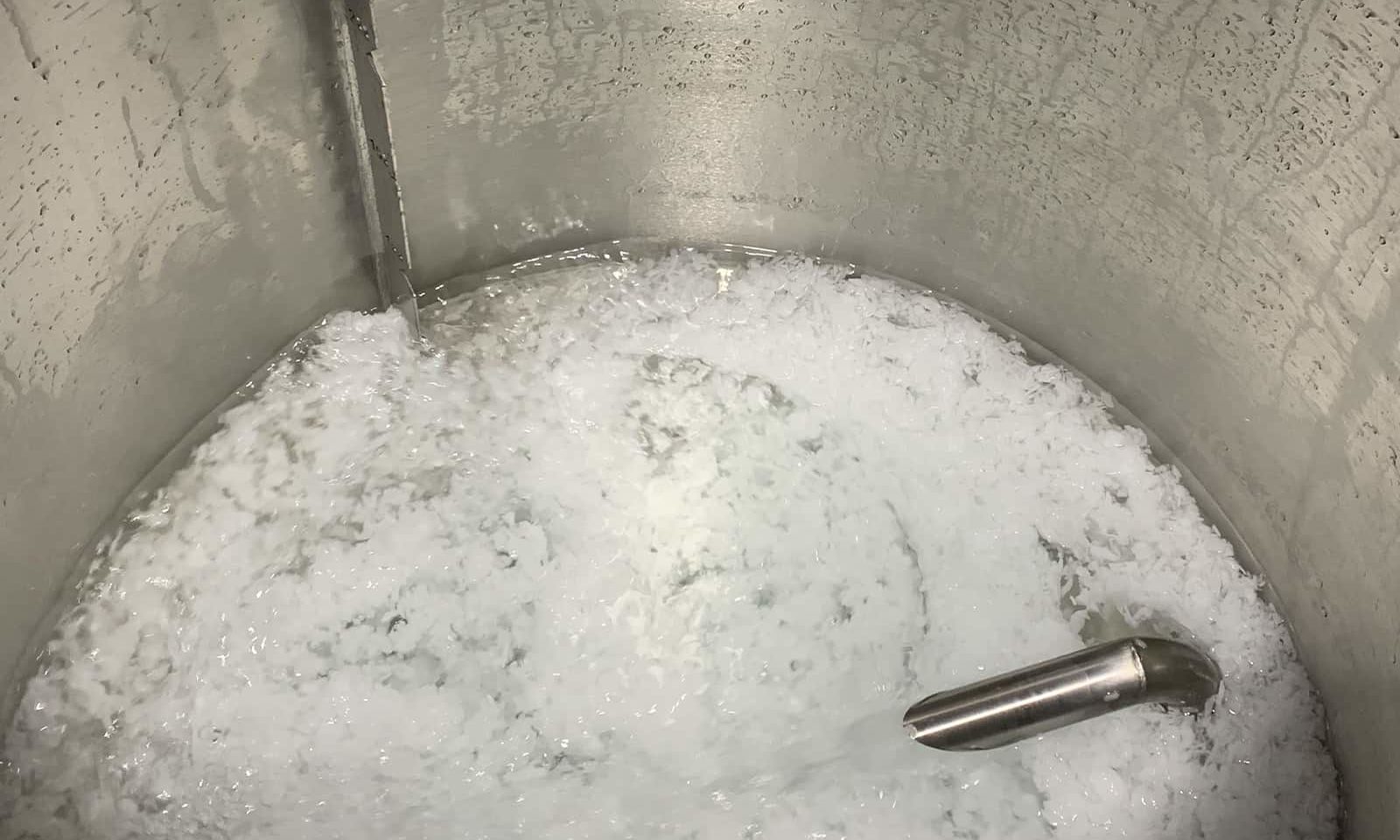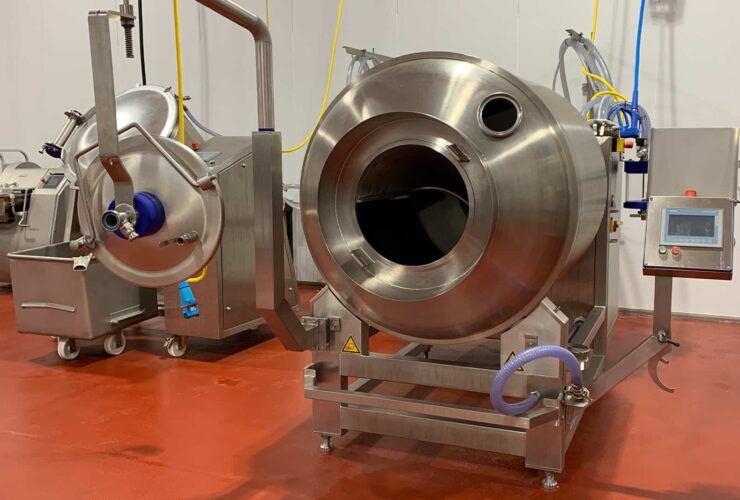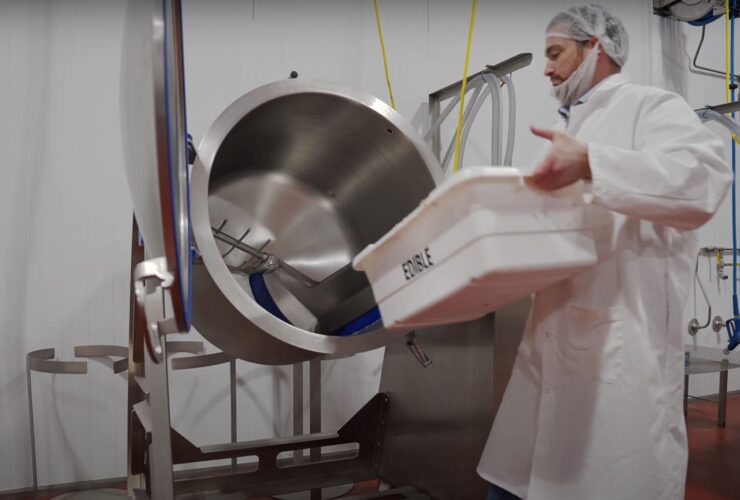Understanding proper brining methods for meat and meat alternatives are essential when it comes to improving product yields, product quality and your bottom line as a processor.
The process of brining generally entails marinating the meat or meat alternative in a solution (brine) containing salt and other functional ingredients before cooking.
Brining allows for a moist end result because it hydrates the cells of the muscle tissue before cooking as well as helps the cells to hold on to the water while they are being cooked.
That means that the process of brining, and doing so correctly, is crucial for processors who want to produce a tasty, quality meat product for consumers.
The Science Behind Brining
Understanding the science behind brining is important if it is to be done correctly. Brines have two initial effects in their process. The first one has to do with the salt they contain. The salt from a brine disrupts the structure of muscle filaments, essentially dissolving part of the protein structure that supports the contracting filaments.
The second initial effect consists of the interaction between salt and protein, resulting in a greater water-holding capacity within the cells of the muscle. This helps the cells to absorb the water from the brine. In doing so, the meat’s weight not only increases, but the dissolved protein filaments can’t coagulate as densely as before, so the cooked meat becomes more tender in both appearance and taste.
Changes in Muscle Fiber as a Result of Brining
Myofibrils, the main structural components of meat, occupy about 70% percent of the volume of muscle meat. They contain about 20% protein, with the remaining 80% consisting of water. Thus, the majority of the water content of a meat lies in its myofibrils. When immersed in a brine, the myofibrils can swell to more than twice their original volume.
When it comes to meat, water is retained through capillary action and osmosis. The majority of water is stored in the myofibrils, but a significant amount is also contained within the extracellular space.
Brine surrounding the muscle fiber cells, having a higher concentration of salt than the fluid within the cells, allows for salt ions to enter the cells via diffusion. The high salt concentration immediately begins to do its work on the protein complexes within the muscle fiber. The end result of this interaction is muscle fibers drawing in a substantial amount of water through both osmosis and capillary action.
The Importance of Chilled Brine
Another important aspect for processors to understand about brining has to do with its temperature. Chilling the brine correctly, as well as maintaining a decreased temperature, is crucial to product yield. This is because while getting your brining solution into the meat is easy, getting it to stay there can be complicated. A chilled brine ensures better retention every time.
Colder is Better
One of the easiest things processors can do is to control the temperature of their brine. Generally, a colder brine is always better, and processors ought to aim for 32º F and under, though depending on the salt content, it can be even lower.
Chilling Methods
There are several main ways for processors to chill their brines, though not all methods are created equal. While there is no specific piece of equipment that is designed for brine chilling, you can likely do so using the equipment you already use for other purposes.
Ice
The easiest way to chill a brine is by using ice. Replacing some of the water weight of your brine with ice will lower the temperature of your brine quickly and get it to that 32º F and under range. This can be accomplished by adding ice to your brine mixer or brine holding tank.
Just make sure you account for the increased presence of water in your brine when the ice melts, or your ratios will be off.
Tube-in-Tube Heat Exchangers
A tube-in-tube heat exchanger, though it can cost more upfront, can be very efficient for your brining needs. They allow for very quick decreases in temperature at the front end of your process.
Jacketed Tanks
Jacketed tanks, such as tumblers or mixers, are most effective in their ability to hold and maintain temperatures. Their downside is that they are not as efficient as tube-in-tube heat exchangers for decreasing the temperature of your brine. This is due to the lack of necessary surface area within a jacketed tank.
At Fusion Tech, we are largely proponents of glycol-jacketed tumblers when it comes to brining needs because they do the best job of maintaining temperatures once brine is added in.
Why Chilled Water Alone Won’t Suffice
One issue many producers run into results from believing that simply chilling the water before brining is enough to properly do so.
The problem with this is that all their time, energy, and money is spent bringing down the temperature of their water only to then send it to the next stage of processing, where the higher temperature of added ingredients causes the overall temperature to increase. So you may have started with adequate below-32º water but by the time ingredients at 60º or 70º are added, the solution has risen to 50º overall. This is why chilling the water and expecting it to properly brine your product is not ideal when it comes to maintaining processing temperatures.
The best thing to do is to decrease the temperature of the overall brine solution before adding in your meat product and then maintain that low temperature for the entirety of your salt marination.
Conclusion
All of this is important to note when looking to improve product quality and consistency, as well as to improve yields, as binding water to protein is an important component of most marination programs.
The key here to remember is that if a processor doesn’t change anything in their process other than controlling the temperature of their brine, they will see a substantial yield increase to their bottom line.
Need help with your brining process? Give us a call at Fusion Tech today. Our brine and marination expert is more than happy to help.





